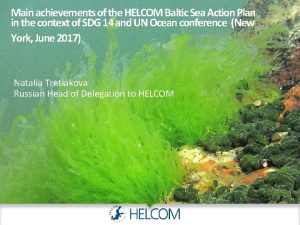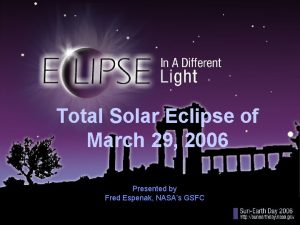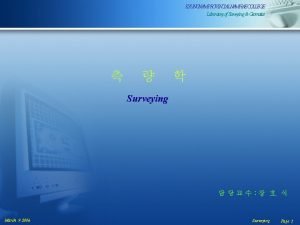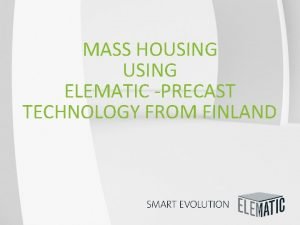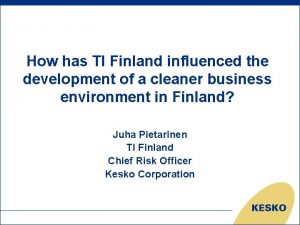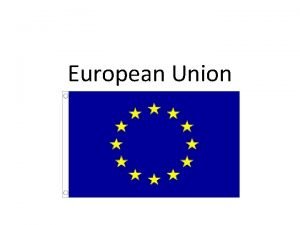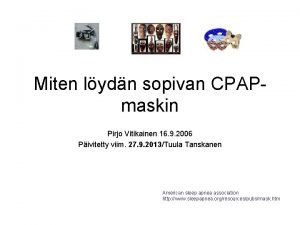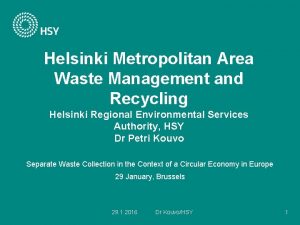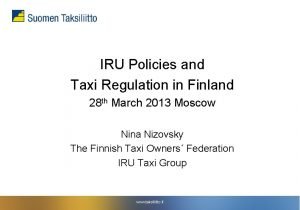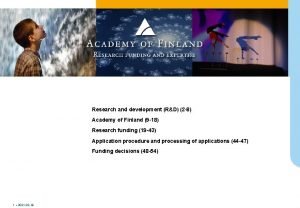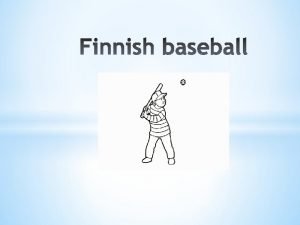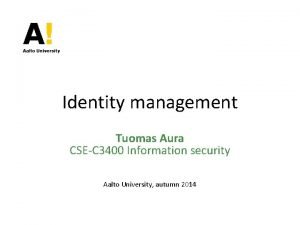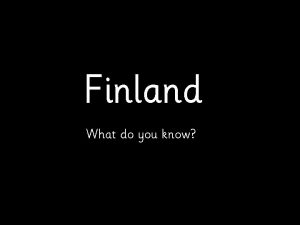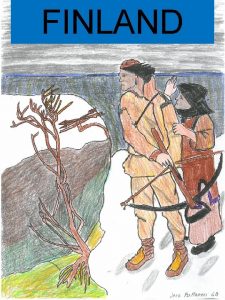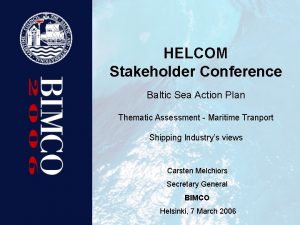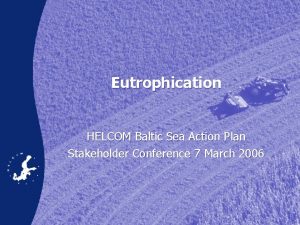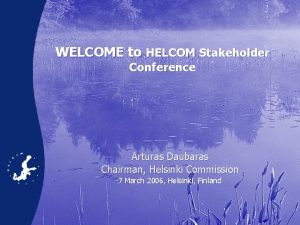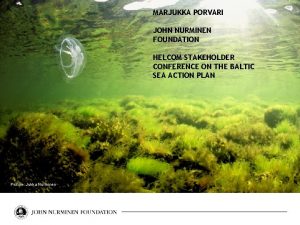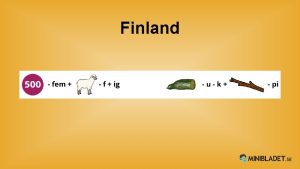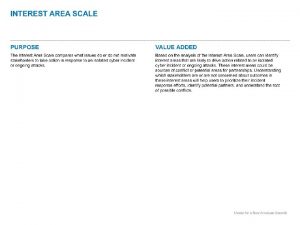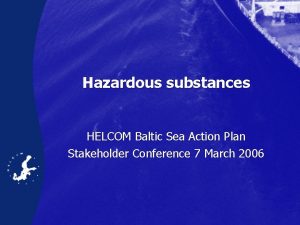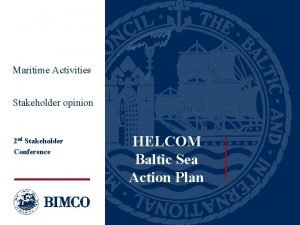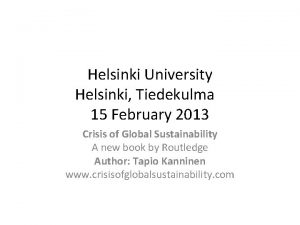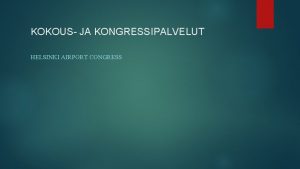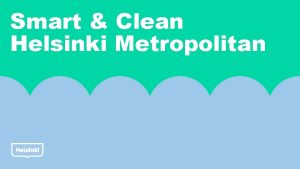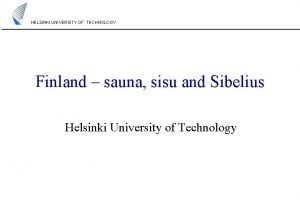HELCOM Stakeholder Conference March 7 2006 Helsinki Finland























- Slides: 23

HELCOM Stakeholder Conference March 7, 2006, Helsinki, Finland Valuation of the Baltic Sea habitat diversity SERGEJ OLENIN Coastal Research and Planning Institute Klaipeda University, Lithuania

Long tradition of Baltic marine biological research Petersen, C. G. J. , 1914. Valuation of the Sea. The animal communities of the sea-bottom and their importance for marine zoogeography. Rep. Danish Biol. Station, 21: 1 -44.

In the sea: Palanga Very little is mapped, nothing is valued and there is only one owner (the State). Uses include: fishery, Seaside Regional Park Regional planning: on land … in the sea On land: Each acre is valued, mapped and assigned to the owner. The land use schemes are approved. Uses include: residential housing, agriculture, port industry, transportation of oil, recreation, nature conservation, cultural heritage, transportation, dredge spoil dumping, cultural heritage, etc. Klaipėda

The highest level of marine biodiversity: the diversity of habitats (biotopes)

Valuation of the Sea: biotope as a mapping unit • Biotope = the physical 'habitat' with its biological 'community‘ Natural combination of physical environment with characteristic assemblage of marine plants and animals Photos courtesy of E. Andrulewicz

Marine biotope classification systems • HELCOM, 1998. Red list of Marine and Coastal Biotopes and Biotope Complexes of the Baltic Sea Environment Proceedings, No. 75: 39 -43. • EUNIS, 2004: European Nature Information System. European Environment Agency. http: //eunis. eea. eu. int/habitats. jsp

Underwater biotope research Description of sea bottom and sampling by SCUBA divers Remote underwater video survey Sea bed mapping using side scan sonar www. marinegeosolutions. com “Traditional”: sampling of bottom macrofauna with a grab and benthic dredge www. aquaticsciences. com

Underwater biotope research: marine habitat modeling Geophysical data Environmental data Biological data Analysis of spatial patterns, GIS application Statistical inference, development of a model Prediction of habitats Evaluation & calibration

Mapping of the benthic biotopes (Seaside Regional Park, Lithuanian coast)

Mobil sands with burrowing amphipods and mysid shrimps

Large boulders with filamentous green macroalgae

Stony bottoms with the red algae Furcellaria lumbricalis

Stony bottoms with the blue mussel Mytilus edulis

Soft bottoms with the bivalve Macoma baltica and polychaetes Pygospio elegans, Hediste diversicolor

Biotopes as functional units of the coastal ecosystem Functions Spawning ground Foraging area for fish, birds Shelter for fish fry Support for high species diversity Stony bottoms with Furcellaria 2 1 2 2 Stony bottoms with Mytilus 0 2 1 2 Mobil sands with Bathyporeia 0 1 1 0 Soft bottoms in aphotic zone 0 2 0 1 Biotopes 0 – not relevant, 1 – present, 2 - important

Fish spawning ground A twig of Furcellaria with the herring eggs An embryo of the Baltic herring: its life begins in dense canopies of the benthic algae http//: en. wikipedia. org

Fish feeding ground

Active biosedimentation (natural biofilter)

Loss of a biotope = loss of an ecosystem function Swarzewo Chałupy Kuźnica Puck 1957 (after Ciszewski 1962) Chałupy 1968 (after Przybyłek 1968) 1969 -71 (after Klekot 1980) Changes in distribution of the habitat forming red and brown algae, Puck Bay, Poland Swarzewo Chałupy Kuźnica Puck 1977 (after Pliński 1982) Chałupy Kuźnica Puck 1979 al. 1979 (after Ciszewskiet 1992) 1984 (after Pliński 1986) Pictures courtesy of JM Weslawski

Environmental problems: • LOCAL Dredge spoil damping, Waste disposal, • REGIONAL Eutrophication, Overfishing, Chemical contamination, Oil pollution, Invasion of alien species, • GLOBAL Sea level rise, Global warming, Increase in number of storm events

Conclusion • Human activity in the marine environment should be based on the same principles of regional planning and territorial use as on land. • International biotope classification and habitat modeling systems should be developed and used for mapping and valuation of the marine environment of the Baltic Sea. • This will provide a scientifically solid background for the marine environmental management and implementation of the Baltic Sea Action Plan. Map of bottom biotopes in the vicinity of the Būtingė Oil terminal


Tools 1. Standardized classification system of the Baltic Sea marine habitats (both benthic and pelagic); 2. Detailed habitat maps for HELCOM Contracting Parties; 3. Habitat Monitoring System; 4. Marine Habitat Models; 5. Habitat Sensibility Assessment; 6. Assessment of Habitat Functional Traits
 Annamari murtolahti
Annamari murtolahti Helcom baltic sea action plan
Helcom baltic sea action plan March march dabrowski
March march dabrowski Astronomy picture of the day march 29 2006
Astronomy picture of the day march 29 2006 March 9, 2006
March 9, 2006 Finland exams
Finland exams Elematic finland
Elematic finland Ti finland
Ti finland Facts about finland
Facts about finland Energiarenessanssi helsinki
Energiarenessanssi helsinki Kldi
Kldi Mothers day finland
Mothers day finland Resmed suomi
Resmed suomi Esa sundbäck
Esa sundbäck Mti map
Mti map Metropolitan
Metropolitan Ytk unemployment fund
Ytk unemployment fund Rolf ekroth vallila
Rolf ekroth vallila Taxi license finland
Taxi license finland Finland education budget 2021
Finland education budget 2021 Pespallo
Pespallo Population distribution
Population distribution Mannaar yusuf omar
Mannaar yusuf omar Tupas finland
Tupas finland

